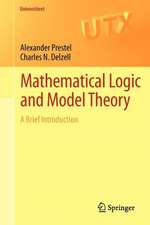Synthesis of Finite State Machines: Logic Optimization
Autor Tiziano Villa, Timothy Kam, Robert K. Brayton, Alberto L. Sangiovanni-Vincentellien Limba Engleză Paperback – 4 oct 2012
The first part of the book introduces the relevant background, presents results previously scattered in the literature on the computational complexity of encoding problems, and surveys in depth old and new approaches to encoding in logic synthesis.
The second part of the book presents two main results about symbolic minimization; a new procedure to find minimal two-level symbolic covers, under face, dominance and disjunctive constraints, and a unified frame to check encodability of encoding constraints and find codes of minimum length that satisfy them.
The third part of the book introduces generalized prime implicants (GPIs), which are the counterpart, in symbolic minimization of two-level logic, to prime implicants in two-valued two-level minimization. GPIs enable the design of an exact procedure for two-level symbolic minimization, based on a covering step which is complicated by the need to guarantee encodability of the final cover. A new efficient algorithm to verify encodability of a selected cover is presented. If a cover is not encodable, it is shown how to augment itminimally until an encodable superset of GPIs is determined. To handle encodability the authors have extended the frame to satisfy encoding constraints presented in the second part.
The covering problems generated in the minimization of GPIs tend to be very large. Recently large covering problems have been attacked successfully by representing the covering table with binary decision diagrams (BDD). In the fourth part of the book the authors introduce such techniques and extend them to the case of the implicit minimization of GPIs, where the encodability and augmentation steps are also performed implicitly.
Synthesis of Finite State Machines: Logic Optimization will be of interest to researchers and professional engineers who work in the area of computer-aided design of integrated circuits.
| Toate formatele și edițiile | Preț | Express |
|---|---|---|
| Paperback (2) | 645.47 lei 6-8 săpt. | |
| Springer Us – 4 oct 2012 | 645.47 lei 6-8 săpt. | |
| Springer Us – 7 dec 2010 | 944.67 lei 6-8 săpt. | |
| Hardback (2) | 651.99 lei 6-8 săpt. | |
| Springer Us – 30 apr 1997 | 651.99 lei 6-8 săpt. | |
| Springer Us – 31 dec 1996 | 953.82 lei 6-8 săpt. |
Preț: 645.47 lei
Preț vechi: 759.37 lei
-15% Nou
Puncte Express: 968
Preț estimativ în valută:
123.51€ • 129.39$ • 102.36£
123.51€ • 129.39$ • 102.36£
Carte tipărită la comandă
Livrare economică 08-22 aprilie
Preluare comenzi: 021 569.72.76
Specificații
ISBN-13: 9781461378211
ISBN-10: 1461378214
Pagini: 400
Ilustrații: XIII, 381 p.
Dimensiuni: 155 x 235 x 21 mm
Greutate: 0.56 kg
Ediția:Softcover reprint of the original 1st ed. 1997
Editura: Springer Us
Colecția Springer
Locul publicării:New York, NY, United States
ISBN-10: 1461378214
Pagini: 400
Ilustrații: XIII, 381 p.
Dimensiuni: 155 x 235 x 21 mm
Greutate: 0.56 kg
Ediția:Softcover reprint of the original 1st ed. 1997
Editura: Springer Us
Colecția Springer
Locul publicării:New York, NY, United States
Public țintă
ResearchCuprins
I From Symbolic To Logic Representations.- 1 Introduction.- 2 Definitions.- 3 Complexity Issues.- 4 Encoding For Synthesis.- II Constrained Encoding.- 5 Symbolic Minimization.- 6 Encoding Constraints.- III Generalized Prime Implicants.- 7 Generalized Prime Implicants.- 8 Minimization of GPIS.- 9 Encodeability of GPIS.- IV Implicit Techniques for Encoding.- 10 Implicit Formulation of Unate Covering.- 11 Implicit Minimization of GPIS.- V Conclusions.- 12 Conclusions.- References.



























